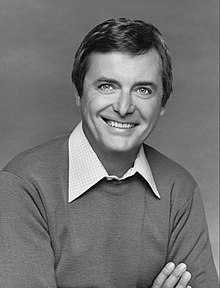
The Actors' Equity Association (AEA), commonly called Actors' Equity or simply Equity, is an American labor union representing those who work in live theatrical performance. Performers appearing in live stage productions without a book or through-storyline may be represented by the American Guild of Variety Artists (AGVA). The AEA works to negotiate quality living conditions, livable wages, and benefits for performers and stage managers. A theater or production that is not produced and performed by AEA members may be called "non-Equity".

The Screen Actors Guild (SAG) was an American labor union which represented over 100,000 film and television principal and background performers worldwide. On March 30, 2012, the union leadership announced that the SAG membership voted to merge with the American Federation of Television and Radio Artists (AFTRA) to create SAG-AFTRA.

Francine Joy Drescher is an American actress and trade unionist. She is currently serving as the national president of the Screen Actors Guild – American Federation of Television and Radio Artists (SAG-AFTRA). She played Fran Fine in the television sitcom The Nanny (1993–1999), which she created and produced with her then-husband Peter Marc Jacobson.

The American Federation of Television and Radio Artists (AFTRA) was a performers' union that represented a wide variety of talent, including actors in radio and television, radio and television announcers and newspersons, singers and recording artists, promo and voice-over announcers and other performers in commercials, stunt persons and specialty acts—as the organization itself publicly stated, "AFTRA's membership includes an array of talent". On March 30, 2012, the members of AFTRA and of the Screen Actors Guild (SAG) voted to merge and form SAG-AFTRA.
Residuals are financial compensations that are paid to the actors, film or television directors, and others involved in making TV shows and movies in cases of the cable reruns, syndication, DVD release, or licensing to streaming media. Residuals are calculated and administered by industry trade unions like SAG-AFTRA, the Directors Guild of America, and the Writers Guild of America. The word is typically used in the plural form.
A background actor or extra is a performer in a film, television show, stage, musical, opera, or ballet production who appears in a nonspeaking or nonsinging (silent) capacity, usually in the background. War films and epic films often employ background actors in large numbers: some films have featured hundreds or even thousands of paid background actors as cast members. Likewise, grand opera can involve many background actors appearing in spectacular productions.
Financial Core refers to a legal carve-out that permits workers opposed to participating in a labor union to be employed under the benefits of a union's contracts without compelling them to be a member of that union.

The Association of National Advertisers (ANA) represents the marketing community in the United States. Its headquarters is in New York City and it has another office in Washington, D.C. ANA's membership include over 600 companies with 25,000 brands that collectively spend over 400 billion dollars in marketing communications and advertising.

Bartle Bogle Hegarty (BBH) is a British global advertising agency. Founded in 1982 by British ad men John Bartle, Nigel Bogle, and John Hegarty, BBH has offices in London, New York City, Singapore, Shanghai, Mumbai, Stockholm and Los Angeles and employs more than 1,000 staff worldwide. The company is part of international agency group Publicis. In 2018 BBH was named the IPA Effectiveness Company of the Year.
Screen Producers Australia (SPA), formerly the Screen Producers' Association of Australia (SPAA) and earlier names, is a national organisation representing film production businesses, emerging producers, service providers and screen industry supporters. It campaigns for a healthy commercial environment for the Australian film industry. It also organises and hosts the annual SCREEN FOREVER conference for film industry professionals, and the Screen Producers Australia Awards, also known as the SPA Awards.
The 1960 Writers Guild of America strike was a labor dispute between the Guild and the Alliance of Television Film Producers. It lasted 148 days, from January 16 to June 12, 1960.
An under-five, also known as an under-5 or a U/5, is a television or film actor whose character has fewer than five lines of dialogue. The term is used in SAG-AFTRA contracts and has been used when referring to performers in a daytime soap opera.

The Screen Actors Guild - American Federation of Television and Radio Artists is an American labor union formed in 2012 by the merger of the Screen Actors Guild and the American Federation of Television and Radio Artists. It represents approximately 160,000 media professionals worldwide. SAG-AFTRA is a member of the AFL-CIO, the largest federation of unions in the United States. SAG-AFTRA is also a member of the International Federation of Actors.
From October 2016 to September 2017, SAG-AFTRA, representing video game voice actors, went on strike against American video game companies over failed contract renegotiation terms of the Interactive Media Agreements that had been in discussion since February 2015. The union sought to have actors, voice actors, and motion-capture actors who contribute to video games be better compensated with residuals based on video game sales atop their existing recording payments; the game companies asserted that the industry as a whole eschews the use of residuals, and by giving the actors these, they would trivialize the efforts of the developers who are "most responsible" for the development of the games. In exchange, the companies had offered a fixed increase in rates and a sliding-scale upfront bonus for multiple recording sessions, which the union had rejected. Other issues highlighted by the strike include better transparency in what roles and conditions actors would perform, more safety precautions and oversight to avoid vocal stress for certain roles, and better safety assurances for actors while on set.

The 1980 actors strike was a labor strike held in July–October 1980 by the Screen Actors Guild (SAG) and the American Federation of Television and Radio Artists (AFTRA), two labor unions representing actors in the American film industry. The strike was caused by a breakdown in labor contract negotiations between the two unions and representatives of film studios, television networks, and other independent producers. The primary point of contention regarded residuals from home media, such as videocassettes and pay television. Specifically, the union was seeking a form of profit sharing wherein they would receive a percentage of the revenue made from home media releases. Additionally, the unions wanted a 35 percent salary increase across the board for their members. By mid-July, the union and industry representatives were at an impasse, and the strike started on July 21. Several days later, the American Federation of Musicians also went on strike for similar reasons.

Sarah Horn Elmaleh is an American voice actor. She is known for her work in the indie video games Gone Home (2013) and Where the Water Tastes Like Wine (2018) and AAA titles such as Final Fantasy XV (2016), For Honor (2017), and Anthem (2019). Elmaleh became involved with the SAG-AFTRA union after she moved from New York City to Los Angeles in 2015. In 2019, she founded the multilingual, online games conference gamedev.world with game developer Rami Ismail.

From July 14 to November 9, 2023, the American actors' union SAG-AFTRA went on strike over a labor dispute with the Alliance of Motion Picture and Television Producers (AMPTP). As the longest strike in SAG-AFTRA history, its combined impact with the 2023 Writers Guild of America strike resulted in the loss of 45,000 jobs, and "an estimated $6.5 billion" loss to the economy of Southern California.

From May 2 to November 9, 2023, a series of long labor disputes within the film and television industries of the United States took place, mainly focused on the strikes of the Writers Guild of America and SAG-AFTRA. It was the second time two Hollywood labor unions were striking simultaneously — the first having occurred in 1960 – and as such, the American news media named this phenomenon the "Hollywood double strike", and surpassed the 1960 dual strike as well. By November 9, 2023, both the Writers Guild and SAG-AFTRA had reached tentative deals with the Alliance of Motion Picture and Television Producers and ended their strikes.
On July 26, 2024, SAG-AFTRA initiated a labor strike involving the union’s voice actors and motion capture artists against American video game companies signed to the union’s Interactive Media Agreements over failed renegotiation terms of the contract that had expired in November 2022. The strike had been authorized in September 2023. The strike started after a year and a half of negotiations which failed to result in a protection agreement from the use of artificial intelligence (AI) for all performers covered by the Interactive Media Agreement. In addition to video game performers, there were concerns about companies having the ability to train AI to replicate an actor’s voice, or create a digital replica of their likeness, without consent or fair compensation.











